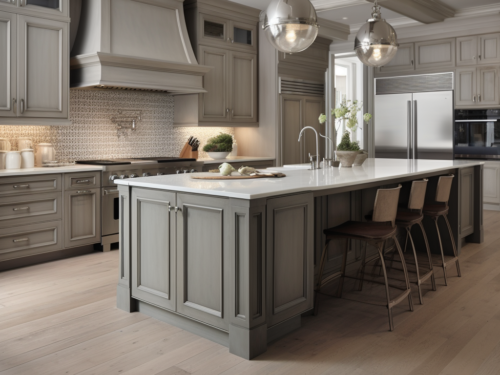
What is the best way to clean hardwood floors?
Hardwood floors exude timeless elegance, adding warmth and sophistication to any home. To preserve their beauty and longevity, proper cleaning is paramount. But what is the best way to clean hardwood floors? To help steer you in the right direction, let’s take a look at the best practices for cleaning hardwood floors, ensuring they remain gleaming and pristine for years to come.
The best way to clean hardwood floors
- Regular Dusting and Sweeping: Begin your hardwood floor cleaning routine with regular dusting or sweeping. Use a soft-bristle broom or a microfiber dust mop to remove loose dirt, dust, and debris. This simple step prevents scratches caused by abrasive particles.
- Gentle Vacuuming: Opt for a vacuum cleaner with a soft-bristle attachment or a hardwood floor setting to remove dirt from hard-to-reach areas and between floorboards. Avoid vacuums with beater bars, as they can damage the wood surface.
- Damp Mopping with the Right Solution: For deeper cleaning, damp mop your hardwood floors. Use a well-wrung, damp microfiber mop to avoid excess water. The key is to use minimal moisture to prevent water damage. Consider using a hardwood floor cleaner specifically designed for your floor’s finish. Alternatively, mix a small amount of mild dish soap with water for a DIY solution.
- Avoid Excess Water: Hardwood and excess water don’t mix well. Wipe up spills immediately to prevent water from seeping into the wood and causing damage. When damp mopping, ensure the mop is only slightly moist, and always dry the floor promptly.
- Use Vinegar and Water Sparingly: While vinegar is a popular natural cleaner, it’s essential to use it sparingly on hardwood floors. Mix one cup of white vinegar with a gallon of water for a gentle, homemade cleaning solution. Test it in an inconspicuous area first.
- Choose the Right Cleaning Products: When opting for commercial hardwood floor cleaners, choose products recommended by the flooring manufacturer. Avoid using harsh chemicals, ammonia, or abrasive cleaners that can strip away the finish.
- Protective Measures: Place mats or rugs at entry points to trap dirt and prevent it from being tracked onto the hardwood floors. Felt or soft rubber protectors on furniture legs can prevent scratches.
- Regular Maintenance: Schedule regular maintenance, including polishing or buffing, to keep your hardwood floors looking their best. Consult with flooring professionals to determine the appropriate frequency based on your floor’s specific needs.
- Humidity Control: Hardwood floors are sensitive to changes in humidity. Maintain a stable indoor humidity level to prevent the wood from expanding or contracting. Use a humidifier in dry seasons and consider a dehumidifier in humid climates.
Caring for hardwood floors is a combination of regular maintenance, proper cleaning techniques, and preventive measures. By incorporating these best practices into your cleaning routine, you can ensure that your hardwood floors retain their natural beauty and shine, creating a welcoming and elegant atmosphere in your home. Remember to adapt your cleaning routine based on the specific requirements of your hardwood floors and the recommendations of the flooring manufacturer.


